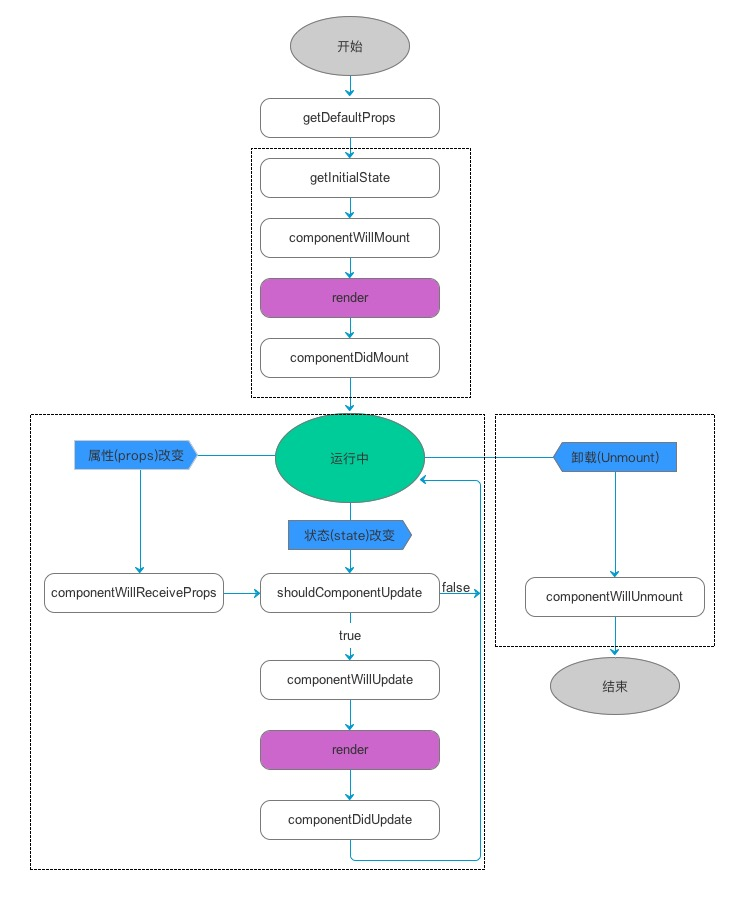React 生命周期分为三种状态 1. 初始化 2.更新 3.销毁

初始化
1、getDefaultProps()
| 设置默认的props,也可以用dufaultProps设置组件的默认属性 |
2.getInitialState()
| 在使用es6的class语法时是没有这个钩子函数的,可以直接在constructor中定义this.state。此时可以访问this.props |
3,componentWillMount()
| 组件初始化时只调用,以后组件更新不调用,整个生命周期只调用一次,此时可以修改state。 |
4,render()
| react最重要的步骤,创建虚拟dom,进行diff算法,更新dom树都在此进行。此时就不能更改state了。 |
5,componentDidMount()
| 组件渲染之后调用,只调用一次 |
更新
6,componentWillReceiveProps(nextProps)
|
组件初始化时不调用,组件接受新的props时调用。 React 16.3 以后的版本加了两个生命周期。 |
7,shouldComponentUpdate(nextProps, nextState)
| react性能优化非常重要的一环。组件接受新的state或者props时调用,我们可以设置在此对比前后两个props和state是否相同,如果相同则返回false阻止更新,因为相同的属性状态一定会生成相同的dom树,这样就不需要创造新的dom树和旧的dom树进行diff算法对比,节省大量性能,尤其是在dom结构复杂的时候 |
8、componentWillUpdata(nextProps, nextState)
| 组件初始化时不调用,只有在组件将要更新时才调用,此时可以修改state,在 componentWillUpdate 的函数当中,此时可以更改 state, 比如 nextState.name = '你想要更改的值', render 的时候会用你更改的值。 这里面调用 this.setState() 要谨慎,不能每次在 componentWillUpdate 执行 this.setState(),否则会陷入死循环 |
9,render()
| 组件渲染 |
10,componentDidUpdate()
| 组件初始化时不调用,组件更新完成后调用,此时可以获取dom节点。 |
卸载
11、componentWillUnmount()
| 组件将要卸载时调用,一些事件监听和定时器需要在此时清除。 |